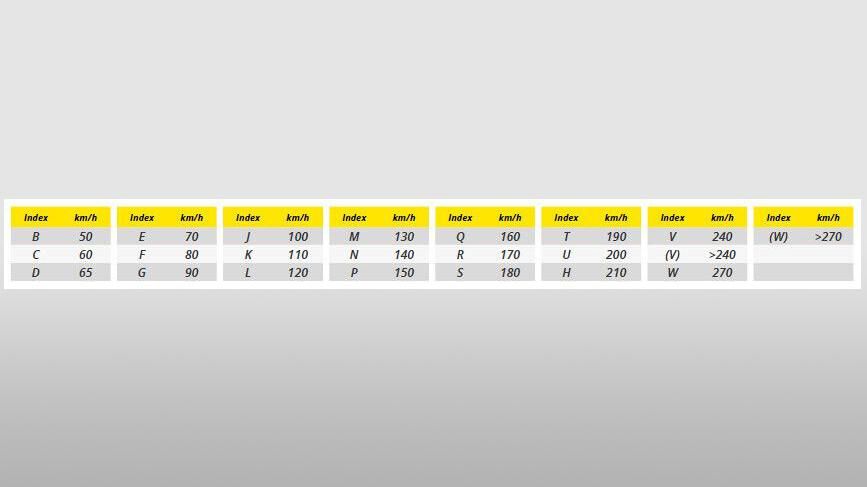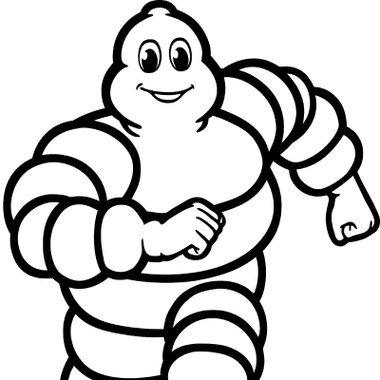What are motorcycle tyre speed rating and load rating?
The European Tyre and Rim Technical Organisation (ETRTO) is an organisation that defines tyre standards that tyre manufacturers must meet. These include speed ratings and load ratings.
Motorcycle makers homologate tyre sizes for each of their vehicles, both front and rear, including a maximum speed and load. Then, the tyre manufacturer carries out regulatory testing to ensure that the tyres comply with ETRTO standards and motorcycle makers homologations.
In short, the speed rating and load rating ensure that a motorcycle is fitted with the correct tyres, in terms of speed and load, to enable the rider to drive safely.
How are the tyres tested?
From the moment a tyre is manufactured, Michelin carries out numerous tests to ensure that it supplies the motorbike manufacturer as original equipment and its customers with safe tyres that comply with standards.
For this, the maximum load is simulated, including stresses that could affect the behaviour of the tyre. We also test driving at the minimum pressure and maximum speed that the tyre should be able to withstand.
The test results should verify that a tyre is capable of running at a minimum pressure, under stress and at the speed defined by the vehicle manufacturer. In this case, the tyre can be marked with the relevant speed and load ratings.
Understanding motorcycle tyre speed ratings
Motorcycle tyre speed rating chart
Vehicles have a maximum speed at which approved tyres must be able to perform. The speed rating corresponds to this maximum speed. It is indicated by a letter.
Example: 180/55 ZR 17 M/C (73W)
Here, the tyre speed rating is (W).
To find out what maximum speed a speed rating corresponds to, simply refer to the table below.

In our example, the index (W) corresponds to a speed above 270 km/h.
Speed rating in brackets
A speed rating in brackets means "above".
Without brackets, the W corresponds to a maximum speed of 270 km/h (see table).
With brackets, it means that the vehicle can go above 270 km/h, with no speed limit.
It should be noted that if the bracket refers to the speed index, it generally includes the load index/speed rating pair in order to respect the generalized nomenclature. Thus, to take the example given above, the tyre will not be marked 73(W), but rather: (73W).
Understanding motorcycle tyre load ratings
Vehicles have a maximum load at which approved tyres must be able to perform. The load rating corresponds to this maximum load. The load rating is indicated by a number preceding the letter of the speed rating.
Example : 120/70 ZR 17 M/C (58W)
Here the load rating is 58.
To find out what maximum load a load rating corresponds to, simply refer to the table below.
Motorcycle tyre load rating chart

In our example, 58 corresponds to a maximum load of 236 kg.
The load rating takes into account not only the mass of the vehicle, but also the mass of the driver, any passengers and additional luggage.
For this reason, the rear tyre has a higher load rating than the front, so that it can carry a higher load.
Is it mandatory to comply with the speed and load ratings?
Yes. The regulations require that the motorcycle maker's homologation be respected for the safety of the vehicle's user and any passenger. Therefore, your motorbike must be equipped with tyres that comply with the homologated dimensions, which include the load and speed ratings defined as safe for your vehicle.
If your vehicle is not fitted with manufacturer-approved tyres, there are safety risks and it may also jeopardise your insurance cover in the event of an accident.
If your tyre is approved for a speed rating that corresponds to a speed you never expect to reach, it is still imperative that the homologation be respected. Why is this? Because the speed rating and the load rating are correlated. If you take a tyre with a lower speed rating, the load rating could be insufficient for your vehicle, which would expose you to the risks mentioned above.
Where are the load and speed rating indicated?
For more information, see our article on tyre markings.
The particularity of reinforced tyres
Some motorcycle manufacturers provide for the same size a normal load rating and a load rating for reinforced tyres. This can happen, for example, when the manufacturer markets a new version of a vehicle with additions that imply a higher load (a more powerful engine, a higher luggage capacity...)
This is the reason why you will sometimes find two different dimensions with the same speed rating:
One with a normal load rating, for example:
130 / 70 - 12 56P
(56 is the load rating)
The other, that of a reinforced tyre indicated by the marking "REINF", for example:
130 / 70 - 12 62P REINF
(62 corresponds to a higher load and the REINF marking indicates a reinforced tyre)
In both cases, the tyres have a speed rating of P.
Depending on the model of the vehicle, one or other of the dimensions will be the one approved by the manufacturer.
The professional is there to guide you
Don't forget that if you have any doubts or if you don't know which size is suitable for your vehicle, the role of the professional is to guide you in your choices, in compliance with the manufacturer's homologation.
You can find a professional near you :




